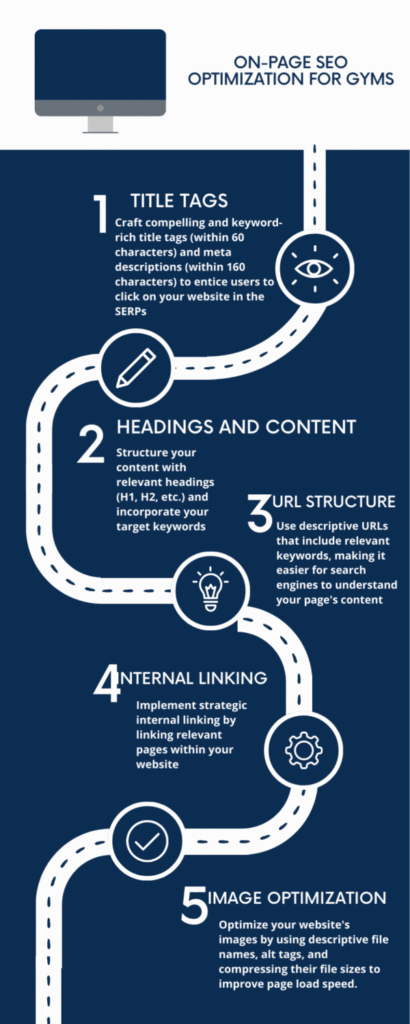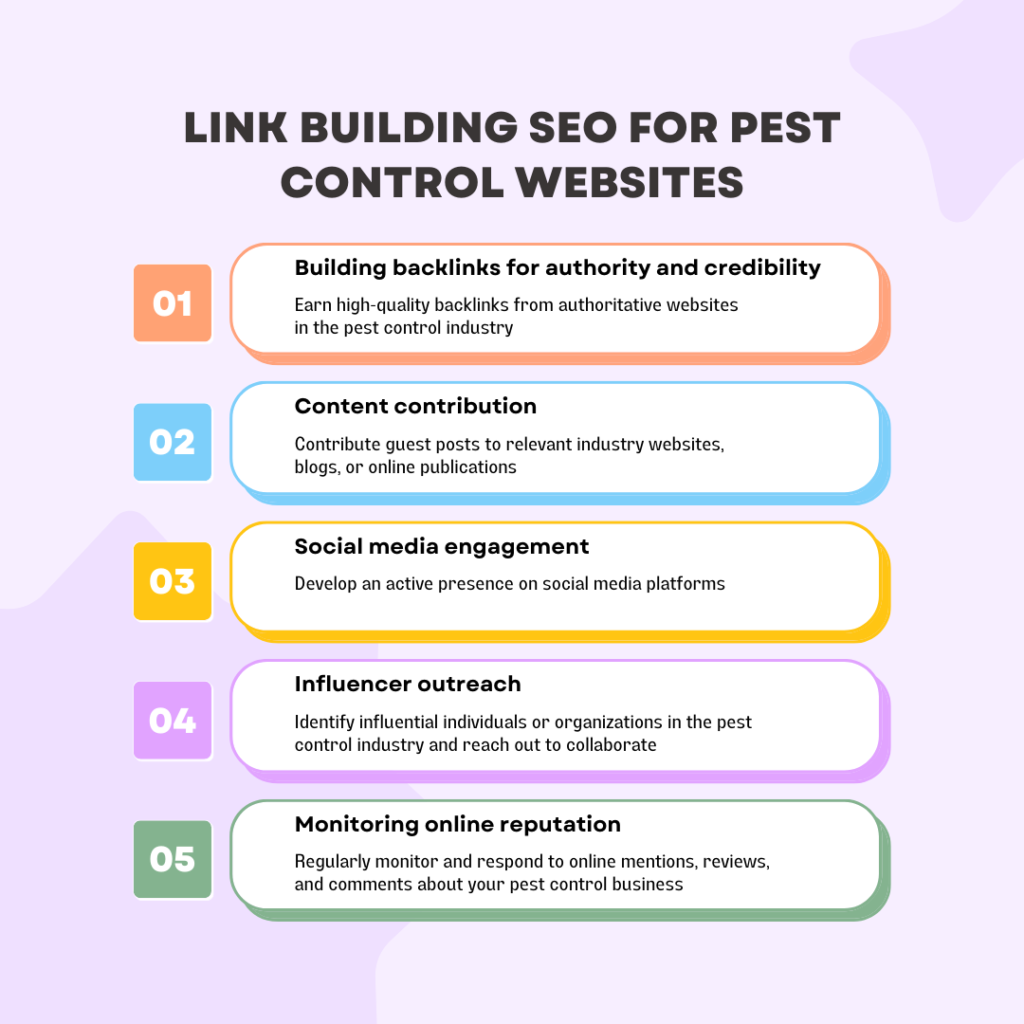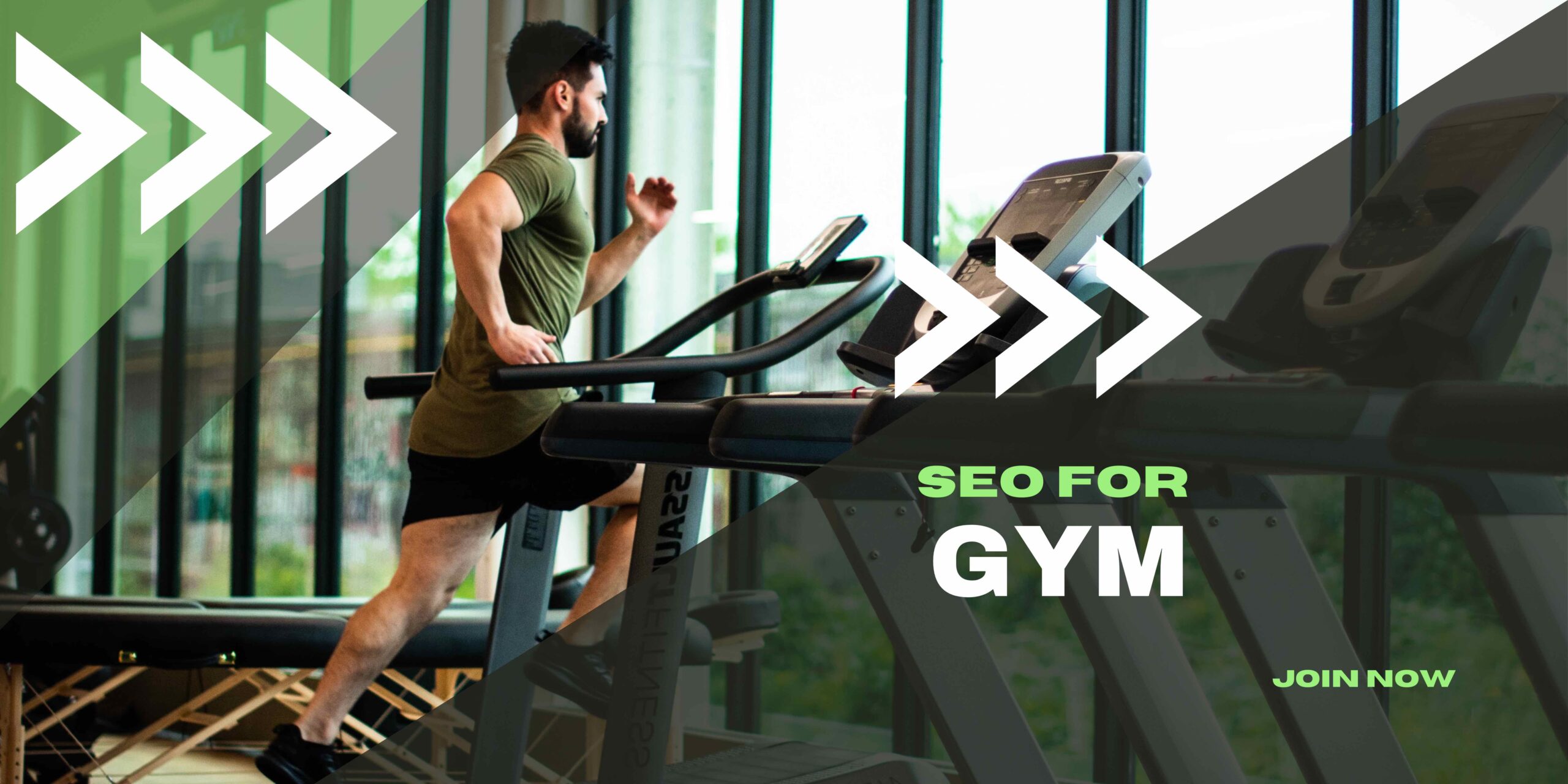Search Engine Optimisation (SEO) plays a crucial role in the success of any business, including gyms. In today’s digital age, potential gym-goers heavily rely on search engines like Google to find local fitness centers and make informed decisions. SEO for gyms involves implementing strategies to improve a gym’s online visibility, attract more website traffic, and ultimately increase membership sign-ups. In this comprehensive guide, we will explore the various aspects of SEO for gyms and provide actionable tips to optimize your gym’s online presence. Also checkout the detailed explanation for other industries like car rental SEO, SEO for plumbers, SEO for construction, SEO for pest control, SEO for Roofing and SEO for Window Cleaning Companies, SEO for Orthodontists and SEO for Bankruptcy Lawyers
II. Understanding Gym Keywords and Target Audience

A. Identifying relevant keywords for gyms To kickstart your gym’s SEO efforts, it is vital to identify and target relevant keywords. These are the search terms potential gym-goers use to find fitness centers in their area. Begin by brainstorming common keywords and phrases associated with gyms, such as “gym,” “fitness center,” “personal training,” etc. Next, conduct keyword research using tools like Google Keyword Planner, SEMrush, or Moz’s Keyword Explorer to identify popular and relevant keywords specific to your gym’s location and services.
B. Conducting keyword research and analysis Keyword research helps you understand the search volume and competition for specific keywords. Look for keywords that have a significant search volume but relatively low competition. Long-tail keywords, which are longer and more specific phrases, can also be valuable for targeting niche audiences. Additionally, consider incorporating location-based keywords to capture local search traffic, such as “gym in [city name].”
C. Understanding the target audience and their search intent To optimize your gym’s SEO effectively, it is crucial to understand your target audience and their search intent. Are they looking for general fitness centers, personal training services, group classes, or specialized programs? By aligning your website content and keywords with your audience’s search intent, you can attract more qualified traffic and increase conversion rates.
III. On-Page SEO Optimization for Gyms

A. Optimizing gym website structure and navigation A well-structured website with intuitive navigation not only enhances the user experience but also helps search engines understand and index your content effectively. Create a clear and organized website structure with logical categories and subcategories. Ensure that visitors can easily navigate between pages, access relevant information, and find your gym’s contact details.
B. Keyword optimization in meta tags and page titles Meta tags, including meta titles and meta descriptions, play a vital role in SEO. Include your target keywords naturally in these tags to improve the relevance of your webpages in search results. Craft compelling meta descriptions that encourage users to click through to your gym’s website.
C. Creating high-quality and relevant content Content is king in the world of SEO. Develop high-quality content that meets the needs of your target audience. Create informative articles, blog posts, and guides related to fitness, health, and wellness. Incorporate your target keywords naturally throughout the content, ensuring it remains engaging and valuable to readers. Use headings (H1, H2, H3, etc.) to structure your content and make it more readable.
D. Utilizing header tags and keyword-rich URLs Header tags (H1, H2, H3) help search engines understand the structure and hierarchy of your content. Use them to break up your content into sections and highlight important headings. Additionally, ensure that your URLs contain relevant keywords instead of generic numbers or symbols. For example, use “www.yourgym.com/fitness-classes” instead of “www.yourgym.com/page1?id=123“.
E. Optimizing images and multimedia elements Images and multimedia elements enhance the visual appeal of your gym’s website. However, search engines cannot “read” images, so it’s essential to optimize them properly. Use descriptive alt tags and filenames that include relevant keywords. Compress image file sizes to improve page loading speed and enhance the user experience.
F. Implementing schema markup for gyms Schema markup is structured data that provides additional context to search engines about the content on your website. Implementing schema markup specific to gyms, such as “LocalBusiness” and “FitnessCenter,” can help search engines understand your gym’s location, contact information, opening hours, and other relevant details. This, in turn, can improve the visibility of your gym in local search results.
IV. Off-Page SEO Strategies for Gyms

A. Building high-quality backlinks Backlinks are an essential component of off-page SEO and play a significant role in determining a website’s authority and relevance. Focus on acquiring high-quality backlinks from reputable fitness-related websites, local directories, and industry influencers. Develop relationships with bloggers and fitness influencers who can link back to your gym’s website in their content.
B. Utilizing local SEO techniques for gyms Local SEO is crucial for gyms targeting a specific geographic location. Optimize your gym’s website for local searches by including your gym’s address, phone number, and business hours on every page. Create location-specific landing pages and ensure consistency in your gym’s Name, Address, and Phone (NAP) information across all online platforms.
C. Leveraging online directories and review platforms List your gym on popular online directories such as Google My Business, Yelp, and Bing Places for Business. Optimize your listings by providing accurate and up-to-date information, including your gym’s name, address, phone number, and website URL. Encourage satisfied members to leave positive reviews on these platforms, as they can boost your gym’s credibility and search rankings.
D. Engaging in social media marketing for gyms Social media platforms provide an excellent opportunity to engage with your audience, share valuable content, and promote your gym’s services. Develop a strong social media presence by creating profiles on platforms relevant to your target audience, such as Facebook, Instagram, and Twitter. Share informative and engaging posts, images, and videos regularly, and interact with your followers to foster a sense of community.
E. Encouraging user-generated content and online reviews User-generated content, such as testimonials, success stories, and member-generated photos, can be powerful for SEO. Encourage your gym members to share their positive experiences and reviews on platforms like Google, Yelp, and social media. This not only enhances your gym’s credibility but also generates valuable user-generated content that can improve your search rankings.
F. Participating in local events and sponsorships Engaging with your local community through events and sponsorships can have a positive impact on your gym’s SEO. Participate in local health and fitness events, charity runs, and sports competitions. These activities provide opportunities to build relationships with local influencers, gain media coverage, and generate backlinks to your website.
V. Technical SEO for Gyms
A. Ensuring mobile responsiveness and fast loading speed In the mobile-centric era, having a mobile-friendly website is crucial. Ensure your gym’s website is optimized for mobile devices, providing a seamless browsing experience. Additionally, optimize your website’s loading speed by compressing images, minifying code, and utilizing content delivery networks (CDNs).
B. Implementing SSL certificate and secure website connections Website security is not only essential for user trust but also for SEO. Implement an SSL certificate to secure your gym’s website and enable HTTPS connections. Secure websites are prioritized by search engines and can have a positive impact on search rankings.
C. Optimizing website architecture and URL structure A well-optimized website architecture ensures that search engines can crawl and index your gym’s content effectively. Create a logical hierarchy of pages and ensure that each page is easily accessible within a few clicks. Optimize your URL structure by using descriptive and keyword-rich URLs that accurately reflect the content of each page.
D. Conducting regular website audits and fixing technical issues Regular website audits help identify and fix technical issues that may impact your gym’s SEO performance. Use tools like Google Search Console, SEMrush, or Screaming Frog to identify broken links, duplicate content, missing meta tags, and other technical issues. Fixing these issues improves user experience and ensures search engines can crawl and index your website properly.
E. Implementing XML sitemaps and robots.txt files XML sitemaps help search engines understand the structure of your gym’s website and prioritize the indexing of important pages. Create an XML sitemap and submit it to search engines to ensure all relevant pages are indexed. Additionally, utilize a robots.txt file to control search engine crawling and exclude irrelevant or sensitive pages from being indexed.
F. Enhancing website accessibility and user experience Accessibility and user experience are important ranking factors for search engines. Optimize your gym’s website for accessibility by providing alternative text for images, using descriptive link text, and ensuring proper heading structure. Improve user experience by enhancing website navigation, reducing page load times, and optimizing for easy reading and browsing.
VI. Local SEO for Gyms

A. Claiming and optimizing Google My Business listing Google My Business (GMB) is a powerful tool for local SEO. Claim and verify your gym’s GMB listing to appear in local search results and Google Maps. Optimize your GMB profile by providing accurate and detailed information, such as your gym’s address, phone number, business hours, website URL, and high-quality images.
B. NAP consistency and local citation building Consistency in your gym’s Name, Address, and Phone (NAP) information across online directories and platforms is crucial for local SEO. Ensure that your NAP information is consistent and up-to-date on your website, GMB listing, social media profiles, and other online directories. Additionally, build local citations by listing your gym’s NAP information on reputable local directories and industry-specific websites.
C. Optimizing gym listings on online directories In addition to GMB, list your gym on other online directories and review platforms. Ensure your gym’s information is accurate and consistent across all listings. This enhances your local search visibility and increases the chances of potential customers finding your gym when searching for fitness centers in your area.
D. Targeting local keywords and creating location-specific content Incorporate location-specific keywords throughout your website and content to target local search traffic effectively. Create location-specific landing pages and blog posts that cater to the needs and interests of your local audience. This demonstrates your gym’s relevance to local search queries and helps drive more targeted traffic.
E. Encouraging customer reviews and testimonials Positive customer reviews and testimonials not only boost your gym’s reputation but also play a significant role in local SEO. Encourage your satisfied members to leave reviews on platforms like Google, Yelp, and social media. Respond to reviews promptly and professionally, demonstrating your commitment to customer satisfaction.
F. Leveraging local link building opportunities Local link building can significantly enhance your gym’s local SEO efforts. Seek out local partnerships and collaborations with other businesses, organizations, and influencers in your area. Participate in local events, sponsorships, and community initiatives to generate local backlinks and increase your gym’s visibility in the local search landscape.
VII. Content Marketing for Gym SEO
A. Developing a content marketing strategy A well-defined content marketing strategy is essential for SEO success. Identify the topics, formats, and distribution channels that resonate with your target audience. Align your content strategy with your gym’s unique selling points, such as specialized training programs, expert trainers, or fitness tips and advice.
B. Creating informative and engaging blog posts Blogging is a powerful way to provide valuable information to your target audience while targeting relevant keywords. Create blog posts that address common fitness-related questions, offer workout tips, share success stories, or discuss industry trends. Incorporate your target keywords naturally while ensuring the content remains informative, engaging, and shareable.
C. Incorporating relevant keywords in content While creating content, strategically incorporate your target keywords in headings, subheadings, and body text. However, prioritize user experience and readability over keyword stuffing. Use synonyms and variations of your target keywords to create natural-sounding content that appeals to both search engines and readers.
D. Promoting content through social media and email marketing To maximize the reach and impact of your content, promote it through social media platforms and email marketing campaigns. Share blog posts, videos, infographics, and other content types across your social media channels to increase visibility and engagement. Build an email subscriber list and regularly send newsletters with curated content and exclusive offers to keep your audience engaged.
E. Utilizing video marketing for gyms Video marketing is a dynamic and engaging medium that can effectively showcase your gym’s facilities, training sessions, and success stories. Create high-quality videos that provide workout tutorials, interviews with trainers, client testimonials, and virtual gym tours. Optimize video titles, descriptions, and tags with relevant keywords to improve search visibility on platforms like YouTube.
F. Guest blogging and collaborating with influencers Collaborating with industry influencers and guest blogging on relevant websites can expand your gym’s reach and build valuable backlinks. Identify influencers and bloggers in the fitness and wellness industry who have a significant following. Offer to provide guest posts or collaborate on joint content initiatives that promote your gym’s expertise and services.
VIII. Measuring and Analyzing SEO Performance for Gyms
A. Setting up Google Analytics and Google Search Console Google Analytics and Google Search Console are essential tools for measuring and analyzing your gym’s SEO performance. Set up these tools to track website traffic, user behavior, keyword rankings, and other key metrics. Monitor your gym’s performance regularly to identify areas for improvement and make data-driven decisions.
B. Tracking and analyzing website traffic and conversions Monitor your website’s traffic sources, user demographics, and behavior metrics using Google Analytics. Understand how users find and navigate your website, which pages they visit most frequently, and how long they spend on each page. Analyze conversion metrics, such as form submissions, newsletter sign-ups, or membership inquiries, to measure the effectiveness of your SEO efforts.
C. Monitoring keyword rankings and visibility Track the rankings of your target keywords to assess your gym’s visibility in search results. Use keyword tracking tools like SEMrush or Moz to monitor keyword rankings over time and identify opportunities for improvement. Adjust your SEO strategies based on the performance of specific keywords to optimize your gym’s search visibility.
D. Analyzing user behavior and engagement metrics User behavior and engagement metrics provide insights into how visitors interact with your gym’s website. Analyze metrics such as bounce rate, time on page, and page views per session to gauge user engagement and the effectiveness of your content. Identify pages with high bounce rates and optimize them to improve user engagement and increase conversion rates.
E. Utilizing heatmaps and A/B testing Heatmap tools like Hotjar or Crazy Egg can provide visual representations of user behavior on your gym’s website. Analyze heatmaps to identify areas of high engagement, as well as areas that receive little attention. Use A/B testing to experiment with different variations of your website elements and content to identify what resonates best with your audience and improves conversion rates.
F. Adjusting and refining SEO strategies Based on the data and insights gathered from analytics tools, continually refine and adjust your SEO strategies. Focus on optimizing pages that are underperforming, targeting new keywords, or experimenting with different content formats. SEO is an ongoing process, and staying informed about industry trends and algorithm updates is crucial to maintaining and improving your gym’s search visibility.
IX. Conclusion
Implementing effective SEO strategies is essential for gyms looking to attract more visitors to their website, increase brand visibility, and ultimately grow their membership base. By understanding the importance of keywords, optimizing on-page elements, implementing off-page strategies, and leveraging local SEO techniques, your gym can improve its online presence and attract a steady stream of qualified leads. Remember to monitor and analyze your SEO performance regularly, adjust your strategies based on data-driven insights, and stay up-to-date with industry best practices to stay ahead of the competition. With a well-executed SEO plan, your gym can thrive in the digital landscape and reach its full potential

I would like to introduce myself as Uttam, an Internet Marketing Expert and professional a blogger and founder of Ur Computer Technics. Also, I’m a passionate entrepreneur, SEO Specialist, and fitness freak.







